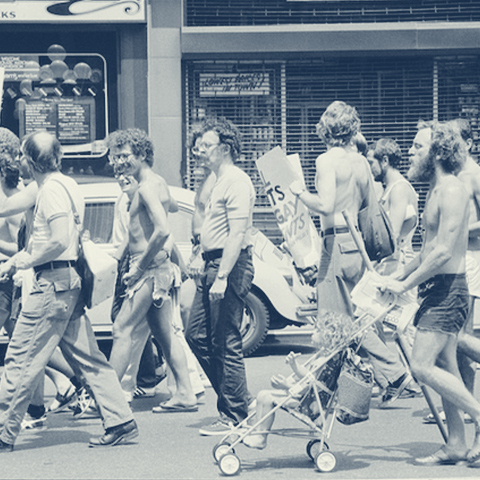Castro Lesson Plans

These free lessons plans were carefully developed to align with California Core Standards in US, World History and Social Studies. Each 75-minute lesson is designed to build on the history told through our immersive experiences, offering an interactive project-based approach for High School students. Read on for an overview of all 3 lessons, or download the PDFs to see the full lesson outlines, supplementary materials and instructions, as well a a detailed breakdown of the educational standards each lesson meets.
LESSON 1
Life Lessons: Mainstream American Views on the LBGTQ Community in 1964
Mainstream Emergence of LBGTQ Culture in the Polarized 1960s
This lesson plan allows students to explore the context of the Castro Walk through the push and pull of the liberal/ conservative ideologies of the 1960s, while reading the first mainstream article "Homosexuality in America" about LBGTQ+ culture in Life Magazine, the most widely ride periodical of the era.
Essential Question
How does the coverage of LGBTQ+ culture in the most read magazine in America at the time reflect the shifts in 1960s American society?
Objectives
- Explore the cultural shifts in the 1960s between liberal and conservative ideologies.
- Discuss the significance of LBGTQ culture appearing in Life Magazine.
- Use analysis to make historical inferences about this tumultuous era.
Key Ideas
1960s Liberal v. Conservative Split, Media and American Culture, Government Powers and Individual Rights
Assessment
Students will jigsaw the seminal mainstream article about Homosexuality from Life Magazine
Materials
Students will need a pen, paper, computer, and access to wi-fi.
Grade and Standards
- U.S. History
- On level through Advanced Placement and the International Baccalaureate, AP American Government and Politics, Civics
- Historical and Social Science Analysis Skills (p727-728)
LESSON 2
The Audacity of Hope: Reconciling the Promise Against the Practice of American Ideals
American Ideals of Freedom, Representation, and Individual Rights
This lesson plan gives students a space to understand the humanity of the LBGTQ+ community and the inclusion of the struggle for representation into the larger discussion of American civil rights and liberties.
Essential Question
How can Americans reconcile the promise of American core values of freedom, representation, and individual rights against the practice of this ideology?
Objectives
- Explore the intersectionality of civil rights issues through close reading and corroboration
- Evaluate the rhetoric of the American Revolutionary ideology
- Relate civil liberties and civil rights across time period
Key Ideas
Civil Rights, Civil Liberties, Bill of Rights, Liberty
Students will attempt to reconcile the practice and promise of American values across time periods, linking African American and LBGTQ+ civil rights and liberties in a broader fight for inclusion.
Assessment
Students will attempt to reconcile the practice and promise of American values across time periods, linking African American and LBGTQ+ civil rights and liberties in a broader fight for inclusion.
Materials
Students will need a pen, paper, computer, and access to wi-fi.
Grade and Standards
- U.S. History
- On level through Advanced Placement and the International Baccalaureate, AP American Government and Politics, Civics
- Historical and Social Science Analysis Skills (p727-728)
LESSON 3
In the Navy: LBGTQ+ Representation and Activism
LBGTQ+ Representation in American Institutions
This lesson plan asks students to consider why representation matters and how spaces can be reframed with coexistence and agency.
Essential Question
Why does representation matter, and how can occupied spaces be reframed through resistance and acceptance?
Objectives
LBGTQ+ Representation
1. Understand ways in which the LBGTQ+ community reframed mainstream artistic spaces
2. Learn about how the Castro provided space for the development of queer culture
3. Explore LBGTQ+ resistance and activism through culture
Key Ideas
1960s Liberalism, Media and American Culture, Government Powers and Individual Rights, Queer Culture, Representation
Assessment
Students will create images of representation, activism, or resistance.
Materials
Students will need markers, poster paper, pens; or the poster can be created digitally so students will need a device and access to wi-fi.
Grade and Standards
- U.S. History
- On level through Advanced Placement and the International Baccalaureate, AP American Government and Politics, Civics
- Historical and Social Science Analysis Skills (p727-728)
